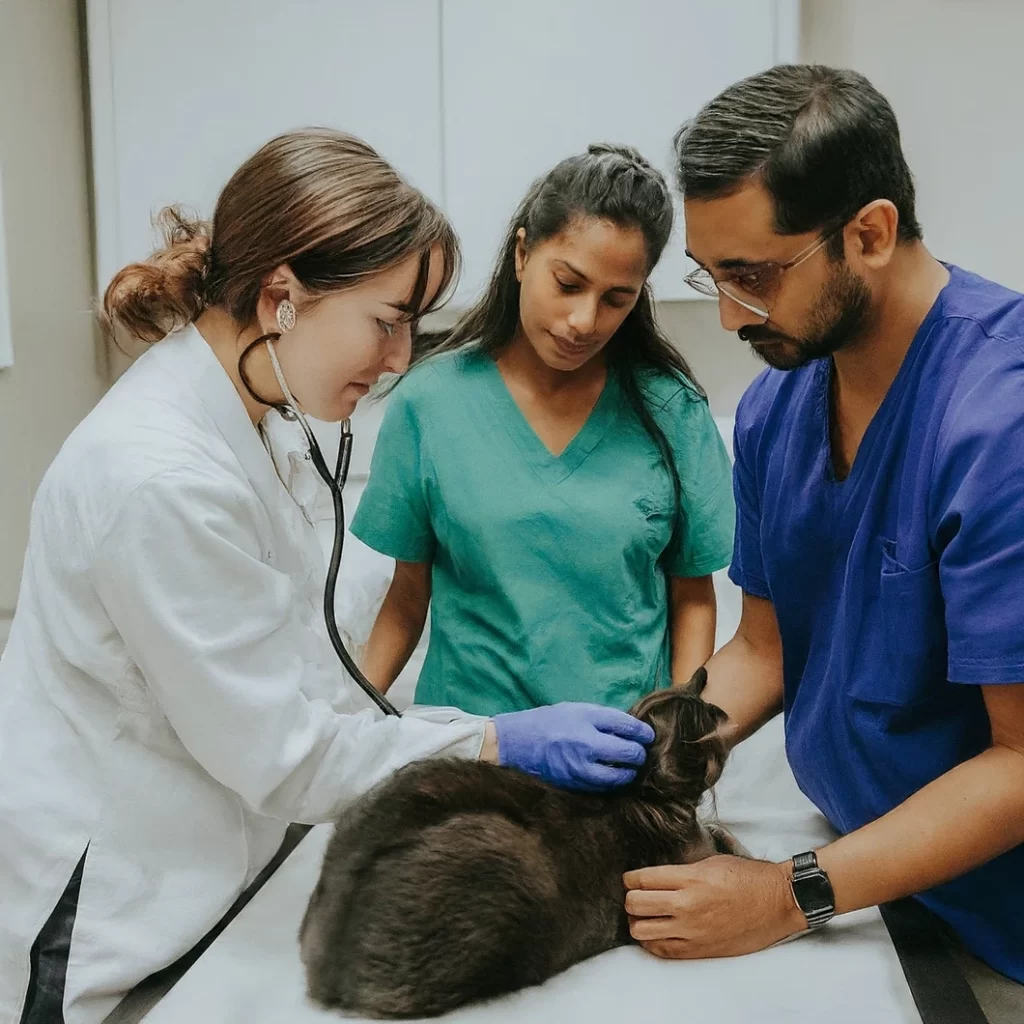
The devastating disease of Feline Infectious Peritonitis (FIP) poses a major diagnostic challenge for even the most seasoned veterinarian. Let’s explore the limitations of individual tests and why a multi-faceted approach is critical.
Important Note: As FIP progresses rapidly, timely action is paramount. Should your cat display potential FIP symptoms, working with your veterinarian on presumptive treatment alongside diagnostics is often the safest strategy.
Diagnostic Tools and Their Limitations
- Blood Tests: Elevated liver enzymes, specific protein imbalances, and changes in blood cell counts offer valuable clues suggestive of FIP. However, overlap with other feline diseases limits their standalone diagnostic accuracy.
- Effusion Analysis: When present, analyzing this fluid buildup offers important insights. Techniques like immunocytochemistry provide high specificity for FIP but can yield false negatives due to varying viral presence in samples. (https://www.msdvetmanual.com/generalized-conditions/feline-infectious-peritonitis/feline-infectious-peritonitis)
- PCR Tests: Highly sensitive at detecting FCoV genetic material in tissues or fluids. The FIP mRNA Multi-test leverages PCR across multiple samples to boost accuracy (Citation – [2], [6]). Still, it’s critical to recognize that even a negative PCR cannot entirely rule out FIP.
- Imaging (X-Ray, Ultrasound): Abnormalities visualized using these technologies align with FIP, especially fluid in the abdomen or chest. However, similar findings can occur in other diseases, hence the need for expert interpretation.
- Tissue Biopsy: This remains the most definitive FIP diagnostic method, with histological analysis pinpointing characteristic changes induced by the virus. However, invasiveness and turnaround time can create potential delays for critically ill FIP cats. ([Citation – 3, 4])
Combination Diagnostic Approach
In light of these complexities, diagnosing FIP typically draws upon a combination of methods:
- Clinical History: Your cat’s background, age, and breed hold weight alongside their symptoms.
- Thorough Physical Exam: Provides detailed assessment for veterinarians to look for patterns linked to FIP.
- Lab Tests: While lacking singular specificity, the data paints a broader picture to support or refute an FIP suspicion.
- Advanced Diagnostics (Effusion Analysis, PCR, Imaging): When possible, employing these specialized tools increases diagnostic confidence.
Presumptive Treatment While Testing
Given FIP’s swift progression, many veterinarians opt for an early presumptive treatment course. With newer antivirals such as Mollieva (molnupiravir), a marked improvement within 30 days strongly confirms an FIP diagnosis, allowing continued treatment to achieve remission. If no dramatic improvement is observed, alternative explanations require deeper investigation.
Citations:
[1] https://vcahospitals.com/know-your-pet/feline-infectious-peritonitis-testing
[2] https://www.ncbi.nlm.nih.gov/pmc/articles/PMC6893704/
[3] https://www.ncbi.nlm.nih.gov/pmc/articles/PMC2748294/
[4] https://www.vet.cornell.edu/departments-centers-and-institutes/cornell-feline-health-center/health-information/feline-health-topics/feline-infectious-peritonitis
[5] https://fiptreatment.com/diagnosing-fip/
[6] https://www.gribblesvets.com.au/veterinarians/our-tests/companion-animals/tests-by-dept/serology/feline-infectious-peritonitis-fip-diagnosis/
[7] https://www.vetmed.auburn.edu/academic-departments/dept-of-pathobiology/diagnostic-services/molecular-diagnostics/feline-infectious-peritonitis-virus/